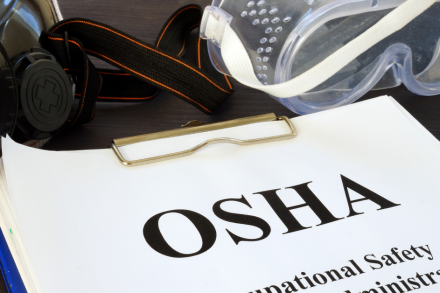
There’s been some discussion in the newsletters these days that talks about OSHA due to budgetary constraints with the current administration, has fewer people, and is conducting fewer inspections, and some of the injury and fatality data is actually starting to increase.
Transcription:
We’re doing several podcasts today on OSHA topics and one that I would say is as we’re more relevant than the generic stuff that we’re talking about is that there’s been some discussion in the newsletters these days that talks about OSHA due to budgetary constraints with the current administration, has fewer people, and is conducting fewer inspections, and some of the injury and fatality data is actually starting to increase.
People are trying to draw the relationship between the fact that because of the budget cuts, more people are getting injured or killed on the job. I’m not sure which side of that argument I come down on, but what we are seeing locally anyway here in New Hampshire is a greater presence of OSHA and more inspections being conducted, which is contrary to what we’re seeing on a national level.
Some of my folks went to a seminar recently and I can’t remember if somebody was there from OSHA or somebody was speaking about OSHA, and they actually have said that they are conducting not only more inspections, but when they’re conducting those inspections, they’re looking towards companies to talk to them, to see what they may have had done by consultants or through their insurance company, lost control representatives.
If they have any reports from those people, they’re looking for copies of those reports to see what has been recommended and if people are actually working on the things that have been recommended for changes. This goes back to a part of a conversation in a different podcast where I talk about having a schedule or a plan for compliance.
Whether you are one of the companies that we manage worker’s comp for or doing consulting work for, or you’ve got somebody else helping you, whether it’s your insurance company or a different consultant, if they come back and tell you what you should be doing to become more compliant, you shouldn’t just sit on the report, you should do something with it.
If it’s something that’s going to take some time to change or to comply with, you should come up with an abatement plan, put some targeted dates on it, and then meet the dates that you set out. I think the example I used in my other podcast was if you’re going to do a hazard communication or Lockout Tagout program, it might take you a couple of years to go from Ground Zero to a fully compliant program for a fairly good-sized company.
If that’s the case, you ought to have quarterly targets and then every quarter updates your plan to see where you’re at. And if you’re behind, don’t be behind. Get it back on schedule. And if you’re on schedule, good for you. Document it so that at least if OSHA comes through the door and wants to look at it, they can see that you have a plan and that you’re sticking to your plan and they are less likely to cite you for it.
If they do cite you for it, they are less likely to penalize you severely for it because you have a plan and you’re actually working on it.
I would say in the short term anyway, be cognizant of the fact that in New Hampshire, OSHA has more of a physical presence, they are conducting more inspections. And if there’s anything we can do to give you some advice on how to deal with it, be sure to get in touch.





